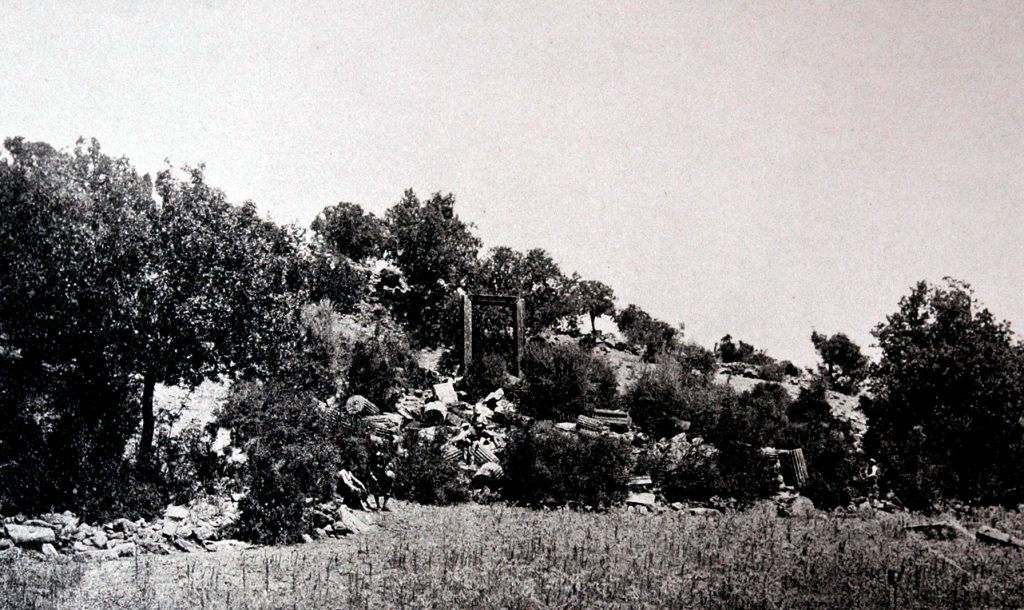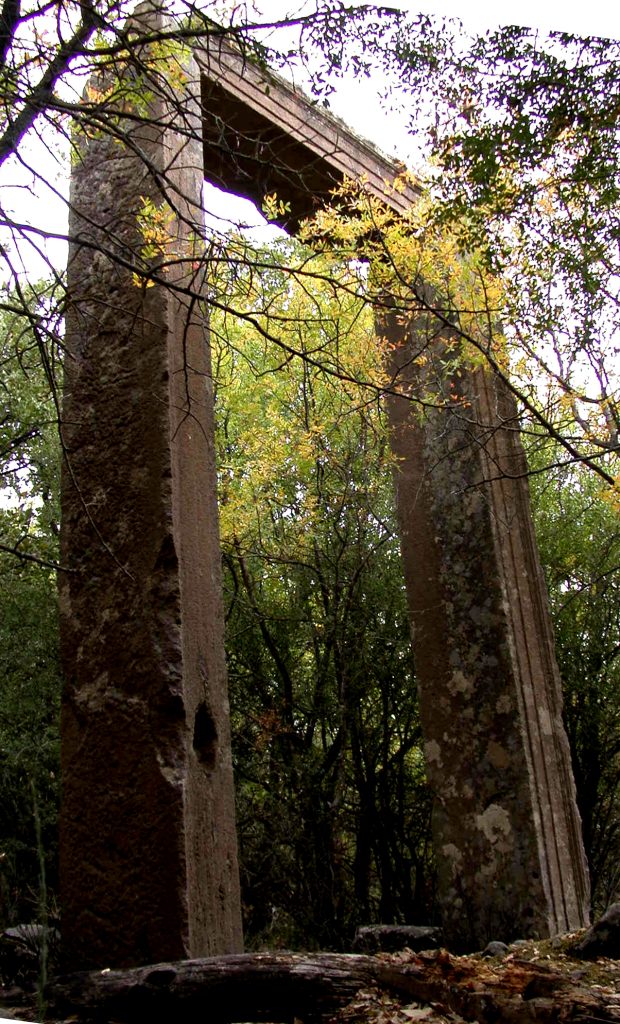
Archaeological, epigraphic and numismatic data show that one of the most important gods in the city was Apollo. Sanctuary of Apollo Chresterios is one of the most important sanctuaries of the city. It is located on the shore of Kocaçay (ancient Pythikos) near the stone paved road between Aigai and Magnesia ad Sipylos. The Stone paved road between the northern gate of the city and the sanctuary, located on the outer wall of the city is approximately 3,5 km long. “Chresterios”, the epithet of Apollo, means prophecy-prophetic and is associated with the priesthood of the god. In connection with the prophecy, the shore of Kocaçay was chosen for the sanctuary and the prophecy hearth.
The visit of Ciriacos of Ancona, who was the first traveler to stop by (?) or pass by the city, must have occurred between 1444 and 1446, before 1447. He gave a copy of the manuscript of Strabon “Apolloni Khresterioi Philetairos Attalou” and under the phrase he wrote that he saw on a door architrave that he thought belongs to a temple, in a letter he wrote to the Genoese Andrea Giustiniani on 13 February 1447. He says that he saw this block between Kyme and Myrina, and that it belongs to the Temple of Apollo in Gryneion. Besides, as known Façade of Apollo Chresterios Temple Aigai 69 the only temple dedicated to Apollon with the epithet of “chresterios” is near Aigai.

An inscription found in the Temple of Apollo Khresterios near Aigai mentions that Philetairos (281-263 BCE) expanded its domain up to Aigai. Based on the statement in the inscription, it is suggested that the temple was built by Philetairos. In another inscription coming from Danışman Tepe (Atçılar Village), located about 7 km north of Aigai, it is mentioned that Philetairos donated land to the Temple of Apollo Khresterios. However, the expression of “… (for them) may a perfect temple be built next to the sanctuary (temple) of Apollo…” was used in a decree erected in Aigai in the name of Seleucus I and his son Antiochus I. The statements in the decree suggest that the Temple of Apollo Khresterios might have been built by Philetairos I, who wanted to have good relations with the Seleucids, for Seleucus and Antiochus I, on behalf of the Aigai people. He also built a sanctuary and temple for Mater Aspordene (Mamurt Kale-Temple of Kybele) at the summit of Yuntdağı, north of the city. It is known that Eumenes I king of Pergamon donated land to the Temple of Apollo Khresterios.

An inscription on the two pieces of architrave block found in the temple shows that Proconsul Publius Servilius Isauricus, a reliable man and close friend of Ceasar, made important contributions to the Temple of Apollo Khresterios while he was serving as the Governor of Asia (46-44 BCE). The inscription on a statue base found in Aigai shows that Publius Servilius Isauricus was honored in the city for his help. The temple is located on a slightly raised terrace on the north bank of the ancient Pythikos River.
However, architectural remains can be seen up to the river bank. This shows that not only the temple, but also other architectural structures were located in the area. A block which was used to tie animals commonly seen in sanctuaries was unearthed during illicit excavations in 2016 in the area between the temple and the river, at a lower level than the temple. The block still has an iron ring on it. Any excavation work hasn’t been done in the area where the Temple of Apollo is located and it was identified only by the studies of German researchers in 1886. The temple is situated in the east-west direction and the stairs in front of it leads to the temple.
Although there are six Ionic columns on the short side of the peripteral temple, the number of columns on the long side could not be determined exactly. The naos door of the building had survived until 2005. The door jambs are 6,10 m high, 0,39 m thick and 0,78 m deep. The interior width of the door is 2,34 m. The large number of drums of Ionic columns show that the height of columns was 7,50 m (lower diameter 0,83 m, upper diameter 0,63 m). All architectural elements of the temple, including the capitals and pedestals of the pillars, were made of brown-colored trachyte stone.
